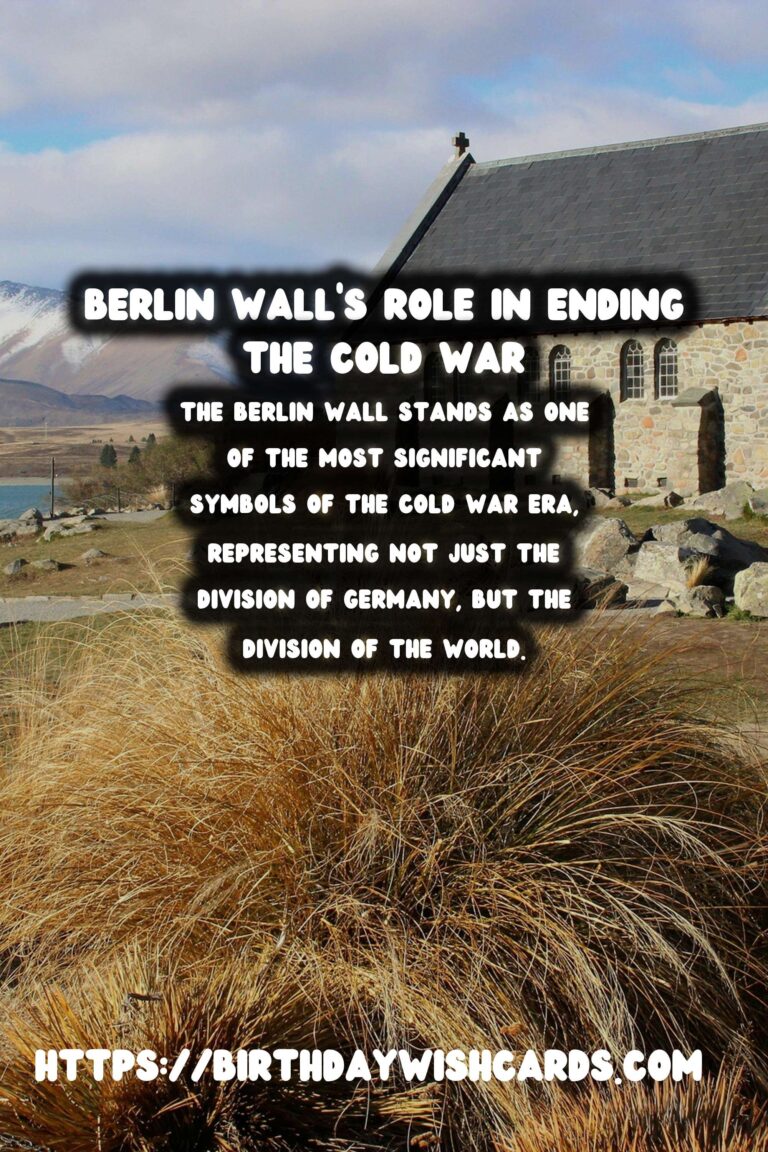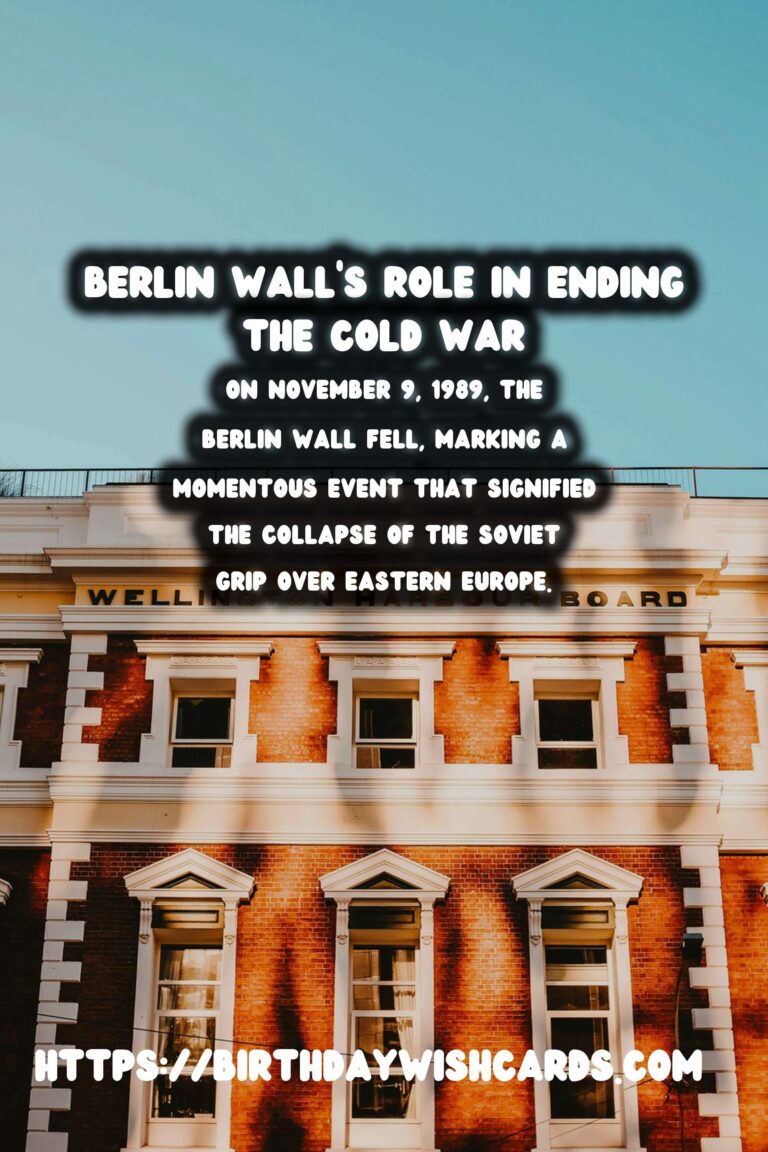
The Berlin Wall stands as one of the most significant symbols of the Cold War era, representing not just the division of Germany, but the division of the world into two ideologically opposed camps: the Communists and the Capitalists. Its construction and fall are cornerstones in history that led to the end of the Cold War.
Construction and Purpose of the Berlin Wall
On August 13, 1961, the Berlin Wall was erected virtually overnight, with the primary intent to stop the mass exodus of East Germans fleeing to the West. The barrier split families and kept the people of Berlin locked within their sector, physically and ideologically. East Germany, under Soviet influence, claimed the Wall was an ‘Anti-Fascist Protection Rampart,’ though its primary purpose was to inhibit the emigration of its citizens.
Life in the Shadow of the Wall
Life in East Berlin was distinctly different from that in West Berlin. The East was characterized by economic hardship, lack of basic freedoms, and the suppression of dissent. This stark contrast fueled West Berlin’s growth and served as a symbolic reminder of the freedoms afforded by democracy.
The Berlin Wall and International Relations
The Berlin Wall strained international relations, heightening tensions between the USA and the Soviet Union. Each check on the Wall was more than just a military standoff; it was a diplomatic challenge in the chess game of global politics.
The Beginning of the End: Détente and Diplomacy
The easing of tensions—détente—was marked by several key discussions and treaties. Leaders from both sides engaged in dialogues aimed at nuclear disarmament and effective communication to prevent misunderstandings.
The Fall of the Berlin Wall
On November 9, 1989, after a series of political changes and public pressure, the Berlin Wall fell. This momentous event was broadcast worldwide, showcasing a massive crowd dismantling the concrete barrier. The fall signified the collapse of the Soviet grip over Eastern Europe and heralded an era of reunification and freedom.
The Legacy of the Berlin Wall
The fall of the Berlin Wall not only led to German reunification but also initiated the collapse of Soviet influence in Eastern Europe. It symbolized the triumph of democracy over autocracy and freedom over oppression. The Wall’s fall is now celebrated as a day of liberation and is often used as a historical benchmark for the end of the Cold War.
The Berlin Wall remains a poignant historical lesson, reminding future generations of the costs of division and the enduring power of human spirit and resolve.
Conclusion
The role of the Berlin Wall in ending the Cold War cannot be overstated. It was more than just a physical barrier; it was a symbolic end to an era of fear and division. By understanding this crucial part of history, we can appreciate the fragile nature of peace and the enduring necessity for diplomacy and dialogue.
The Berlin Wall stands as one of the most significant symbols of the Cold War era, representing not just the division of Germany, but the division of the world. On November 9, 1989, the Berlin Wall fell, marking a momentous event that signified the collapse of the Soviet grip over Eastern Europe.
#ColdWar #BerlinWall

